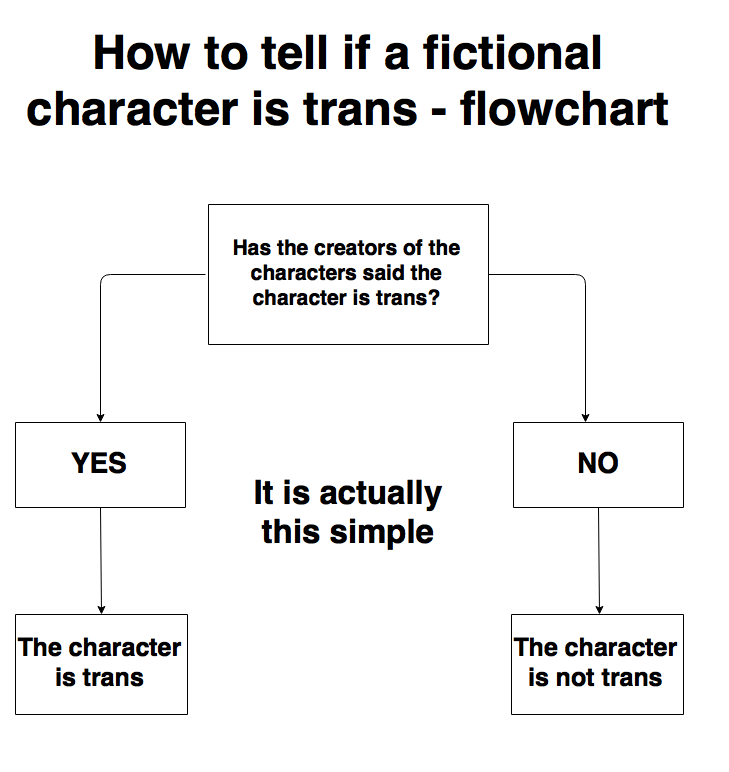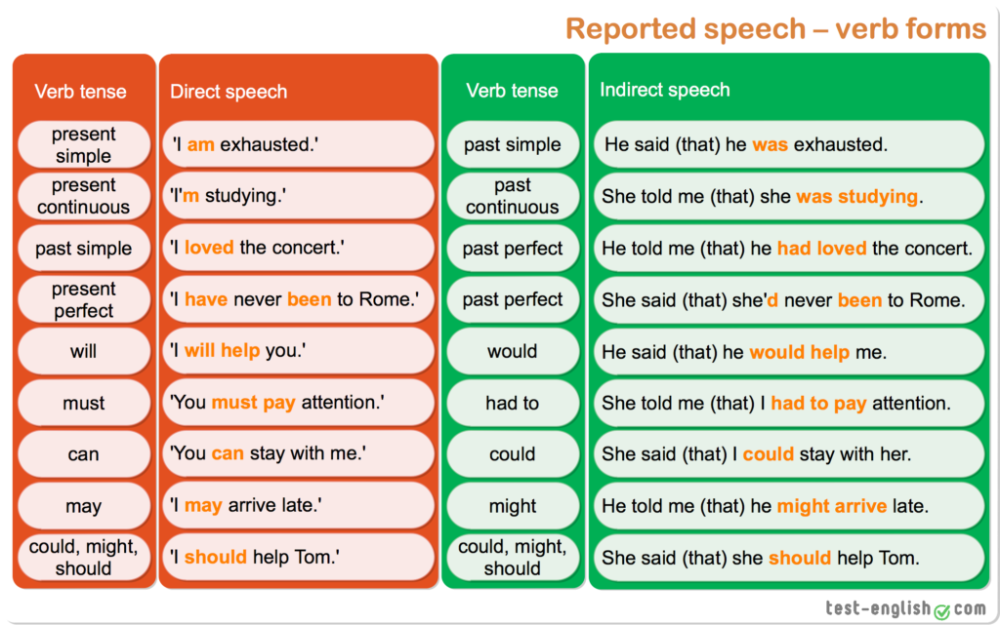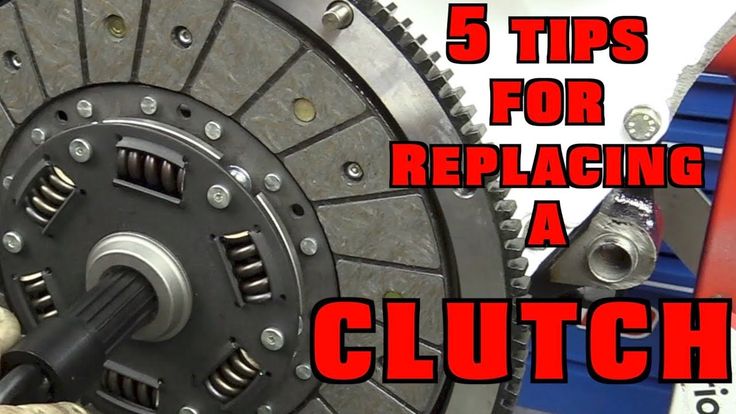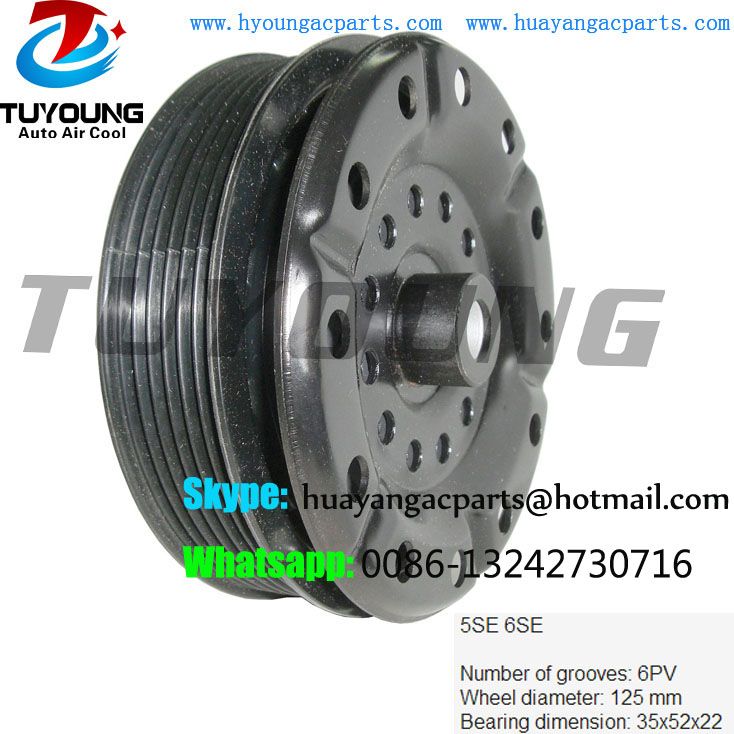The clutch system is the most important connection between your hand and the rear wheel, as far as controlling the machine. When working properly, most riders don’t give their clutch a second thought. However, the importance of the clutch quickly snaps into focus when there’s a problem with the system.
A clutch is an engineering marvel. Imagine you are on the starting line waiting for the gate to drop. You start your bike and pull in the clutch. What follows is a chain reaction of events. A series of moving parts transfer that load down to the clutch, where the pressure plate is pushed away from the clutch pack, basket and inner hub. At that point, there is a disconnection between the transmission and crankshaft.
Clutch functionality involves a series of moving parts that are crucial to engine operation. Periodic maintenance, inspection, and replacement will keep your machine running as it should.With the clutch disengaged, you click the shifter into gear. The gate drops, and you quickly release the clutch lever. The clutch springs force the pressure plate to squeeze the friction and drive plates together, causing the clutch basket and inner hub to synchronize. At that point, the energy generated inside the combustion chamber is carried through the transmission and to the countershaft sprocket, which then transfers the load to the rear wheel. Without an operating clutch, you would be sitting on the starting line as the pack raced away.
Suffice it to say that your clutch is a vital piece of the overall puzzle. And, like most parts on your bike, it won’t last forever. Fortunately, there are three general indicators that your clutch is not working properly. You don’t need to be deft or dexterous to determine whether your drive system is giving up the ghost. The only necessities are a handful of tools, basic mechanical knowledge, and a good sense of smell. In this article, we delve into the symptoms, causes and solutions for the most common clutch problems so you can get back to riding.
In this article, we delve into the symptoms, causes and solutions for the most common clutch problems so you can get back to riding.
Sign #1: Slipping Away
Symptoms:
A slipping clutch is quickly recognizable when you’re twisting the throttle with reckless abandon while the machine is in gear, yet the rear wheel isn’t rotating in unison with the engine’s rpm. If you’re wound out in third gear and only accelerating at a snail’s pace, then something is wrong. You may also be able to notice a vague feel at the clutch lever. Either of these symptoms suggest that the internal clutch components need to be inspected for wear.
Causes:
When a clutch is performing optimally, the drive plates and friction plates are pushed together during clutch engagement (i.e. when the clutch lever is let out). The connection causes the rotation of the clutch basket and the inner hub to synchronize and work as one unit. However, as the plates begin to wear out, the clutch plates will slip against each other instead of grabbing. This prevents the transfer of energy from the engine to the transmission. Unfortunately, clutch slipping is inevitable, even if you aren’t a clutch abuser. Clutch plates wear out over time as a result of rubbing when the clutch is engaged.
However, as the plates begin to wear out, the clutch plates will slip against each other instead of grabbing. This prevents the transfer of energy from the engine to the transmission. Unfortunately, clutch slipping is inevitable, even if you aren’t a clutch abuser. Clutch plates wear out over time as a result of rubbing when the clutch is engaged.
It is also possible that the clutch springs have lost their tension. When this happens, the springs aren’t strong enough to effectively pull the pressure plate against the clutch pack. Just as with clutch plates, clutch springs do not last forever.
Worn clutch springs can also contribute to a slipping clutch. Read on for an explanation on inspecting your clutch springs.Solutions:
When you experience clutch slippage, you’ll need to inspect the drive and steel clutch plates, as well as the clutch springs. To quote Dave Sulecki, Wiseco Powersports Engineer, “It’s very easy to access the clutch on all the new bikes. You can literally lay the bike over on its side, pop off the clutch cover, and start inspecting the components.â€
To quote Dave Sulecki, Wiseco Powersports Engineer, “It’s very easy to access the clutch on all the new bikes. You can literally lay the bike over on its side, pop off the clutch cover, and start inspecting the components.â€
Using a vernier caliper or micrometer, measure the thickness of the steel (or aluminum) drive plates, and the fiber plates. Consult your owner’s manual to find the recommended specs. Be sure to also check the free length of the clutch springs. It’s a good idea to replace the drive and fiber plates, as well as the clutch springs.
The most accurate way to know if your steels and fibers are worn is to measure them and compare the thickness to the recommended spec range in your owner's manual. Similarly, clutch spring free length can be measured to determine if they are outside of spec and need to be replaced.Replacement clutch components—both in individual components and clutch pack kits—are readily available through aftermarket companies like Wiseco. Replacing your fiber and drive plates at the same time is common practice, and when springs are required as well, all these components are available in kits with fibers, plates, and springs in one box. Each kit is built to OEM specifications and far less expensive, and Wiseco clutch springs feature a stiffer rating for a more positive clutch engagement.
Replacing your fiber and drive plates at the same time is common practice, and when springs are required as well, all these components are available in kits with fibers, plates, and springs in one box. Each kit is built to OEM specifications and far less expensive, and Wiseco clutch springs feature a stiffer rating for a more positive clutch engagement.
Find Wiseco clutch components for your bike or ATV here.
Sign #2: Creeping & Bad Smell
Symptoms:
The machine is emitting a foul burning smell that could strip paint off a wall. The stench might be so pungent that it’s evident after pulling into the pits. Generally, though, the smell is noticeable after removing the clutch cover. You may also notice your bike creeping forward with the clutch pulled in and the transmission in gear, no matter how much you adjust the clutch cable.
Causes:
Do the sniff test. Pull the clutch cover off. If you smell burnt clutch material, chances are your clutch will need new components. The burnt smell is the result of the clutch heating up.
“The parts that burn first are generally the friction plates. It’s a real obvious odor. You’ll know it when you smell it. Visually, you’ll see the heat marks in the drive plates. The friction plates can also become black in color. The best thing to do is check the plates dimensionally against the specifications in your owner’s manual. Make sure you’re within tolerance on width and flatness,†states Sulecki.
Burnt friction plates will typically become black in color and burnt drive plates commonly show dark colored wear marks.Solutions:
For starters, you’re going to need to replace the oil. Be sure to pay close attention to the recommended service intervals in your owner’s manual. Doing so can extend the life of your clutch.
Doing so can extend the life of your clutch.
Sulecki adds, “Fresh oil will help keep things lubricated and running cool. Oil does break down from heat and friction over time. In a lot of engines, the clutch shares oil with the transmission and valve train. Oil gets a lot of opportunity to break down quickly. Keep the oil fresh.â€
However, the damage of a cooked clutch cannot be undone. Clutch plates can warp over time from the heat. Warped plates cause the clutch to disengage unevenly and create all sorts of headaches. You will need to invest in new friction and drive plates, at least. However, heat could also damage the clutch springs, effecting spring tension. Be sure to inspect all your clutch components.
If you find your clutch components have been subjected to excessive heat, it's always a good idea to at least replace the drive plates, fibers, and springs (when applicable).Sign #3: Feeling A Drag
Symptoms:
The clutch lever feels lumpy during clutch engagement/disengagement. Sometimes the lever can feel jerky. These are telltale signs that the clutch basket and/or inner hub is damaged and needs inspection.
Sometimes the lever can feel jerky. These are telltale signs that the clutch basket and/or inner hub is damaged and needs inspection.
Causes:
If your machine has the OEM/stock clutch basket, it was likely made using a diecast aluminum material. While fairly lightweight, durability is not stellar.
“When you cast aluminum, you take molten aluminum and pour it into a mold. Once it has solidified, it gets processed from there into a finished part. When the material is molded it is generally not very dense. You get a lot of voids, porosity, inclusions, and imperfections in the material. The constituents inside the material aren’t bonded tightly against each other,†states Sulecki.
The most common wear on cast clutch baskets is notching on the edge of the tangs where the clutch plates engage. The inner hub can be inspected for similar wear. If you see notching like this, it's time for a replacement.
Solutions:
There are a variety of aftermarket clutch basket options that use different manufacturing processes. Billet is a common alternative to casting, but even that has downfalls.
Sulecki explains, “With billet, you’ll start with a cast piece of aluminum. It will generally get compressed a little bit in a forge press or some sort of pressure casting. That’s to condense the material a little tighter. Then the part is machined from the solid piece of metal. It has slightly better properties than a cast part, but not as much as a forged part.â€
Forging is a very intricate and involved process. It begins with a cast and drawn bar of aluminum material, which is then smashed until all of the molecules are bonded to each other. This makes the material much denser and creates what engineers refer to as feature aligned grain flow. Basically all of the grains in the material are forced to flow up through the features–particularly the tangs on the clutch basket and stanchions on the inner hub–for greater strength. All of the material properties improve–from tensile to fatigue to ultimate strength. Ductility is also improved, meaning the material can bend before it breaks.
All of the material properties improve–from tensile to fatigue to ultimate strength. Ductility is also improved, meaning the material can bend before it breaks.
Sulecki adds, “The denser material is very resistant to impact and fatigue, which are two critical components of a clutch basket. Impact is caused by the clutch plates as they drive against the tangs on the clutch basket. Clutch plates will actually start to create indentations on a stock cast part, and dimples on a billet basket. In turn, the plates can’t slide smoothly across the width of the tab as you pull in the clutch lever to disengage the clutch. A forged clutch basket’s resistance to impact means that it will not develop notches in the tangs.†Suffice it to say that forging is the superior material for clutch basket durability and lasting performance.
Check out all the technical details on Wiseco clutch baskets here.
The forged material creates much greater resistance to impact from the clutch plates during operation, providing a seemingly lifetime solution to tang notching.To cap it off, Wiseco hard coat anodizes and coats their forged clutch baskets with Teflon. Hard coat anodizing aids in wear and abrasion resistance, as well as improves lubricity and corrosion resistance. Teflon coating is the last process. It helps fulfill the wear resistance and lubricity that Wiseco requires for their clutch baskets.
Hard coat anodizing and teflon coating finish off Wiseco clutch baskets for ultimate wear resistance and smooth operation.Find a Wiseco clutch basket for your machine here.
Lifetime Guarantee
It’s interesting to note that Wiseco has been manufacturing forged clutch baskets, pressure plates and inner hubs for years, but this all-too-important detail has flown under the radar. “Our forged clutch basket is the best product we make that nobody knows about,†says Sulecki. The performance-driven powersports magnate is so resolute in the durability of their forged clutch baskets that they offer a lifetime guarantee against notching and breakage. What does that mean? You’ll buy it once and never have to worry about it again.
“Our forged clutch basket is the best product we make that nobody knows about,†says Sulecki. The performance-driven powersports magnate is so resolute in the durability of their forged clutch baskets that they offer a lifetime guarantee against notching and breakage. What does that mean? You’ll buy it once and never have to worry about it again.
The clutch is one of the most important aspects of a motor. Doing routine maintenance on a clutch is recommended every 6 to 12 months by most ATV manufacturers. Today, I will explain how to tell if your clutch is bad and needs to be repaired or replaced.
When you accelerate the engine will rev but it won’t accelerate very well or at all. This can happen the whole time you accelerate. Or, it can catch, slip, and then catch again. This occurs because the teeth of the discs are worn and do not lock into place to turn the drivetrain.
The exact amount of time a clutch can last varies based on how your ATV is ridden. For example, if you ‘ride the clutch’ it will cause significantly more wear than if you don’t do so. In this article, I will explain whether you can fix a slipping clutch without replacing the whole clutch, what happens if you continue to drive with a bad clutch, and how to check the life of your clutch.
For example, if you ‘ride the clutch’ it will cause significantly more wear than if you don’t do so. In this article, I will explain whether you can fix a slipping clutch without replacing the whole clutch, what happens if you continue to drive with a bad clutch, and how to check the life of your clutch.
In general, it’s best to replace a slipping clutch. But, a slipping clutch isn’t always caused by a worn clutch. It can also be caused by the misadjusted clutch lever and cable. The clutch is engaged by squeezing on the lever on the handlebars. If the cable is too loose or too tight it can not engage the clutch correctly.
Here’s a video that shows how to adjust the cable on a Honda ATV. But, the process is very much the same on all ATVs. Also, it explains when to replace the clutch cable.
Adjusting the cable should be your first check if your clutch is slipping because it’s far easier than replacing the entire clutch. If the cable is perfectly fine then it isn’t possible to fix a slipping clutch and virtually all mechanics recommend replacing the entire clutch.
If the cable is perfectly fine then it isn’t possible to fix a slipping clutch and virtually all mechanics recommend replacing the entire clutch.
It’s quite an involved job, so you may decide to have a mechanic do the job for you. ATV brands generally have certified technicians that can do the repair for you. However, it can save you quite a bit of money to do it yourself provided you’re confident you have the skills and tools to do so.
Here’s a very good video that shows step by step how it’s done, so you can get an idea of whether you’ll be able to do it yourself or not.
A slipping clutch is a symptom of the teeth being worn. When you engage the clutch it releases the teeth, and when the clutch is let out the teeth grip again turning the drive shaft which turns the wheels. Because the teeth are worn a clutch won’t fix itself. Therefore, when it starts slipping the only way to get it to stop slipping is to replace the entire clutch. A whole new clutch costs in the range of US$500 depending on the make and model of the clutch. As well as, the cost to do the repair.
A whole new clutch costs in the range of US$500 depending on the make and model of the clutch. As well as, the cost to do the repair.
A worn clutch is considered normal wear and tear and is not covered by an ATV warranty. An ATV warranty only covers if the part fails early. So, it’s worth looking into if your clutch fails much earlier than 50,000 miles (80,000 km).
Which is about average for an ATV clutch. There are a range of factors that can decrease the life of the clutch of an ATV, which aren’t necessarily common knowledge unless you’re a mechanic, or tinker around on the engines of cars a lot.
According to National Transmission a transmission repair and replacement company based in Canada the following are a list of don’t to increase the life of your clutch:
Riding the clutch is where you accelerate while the clutch is engaged. A certain amount of this is necessary to stop the engine from stalling. But, you should aim to do it the least amount possible.
A certain amount of this is necessary to stop the engine from stalling. But, you should aim to do it the least amount possible.
When you park your ATV is can happen that you need to leave it on a hill for a certain amount of time. According to the popular ATV owners manuals, you should avoid this as much as possible. However, in the case where you do, don’t leave your ATV in gear, and instead, use the handbrake.
It’s is a known additional fail-safe in case the handbrake fails, however, it does increase wear and tear on the clutch. When you’re stopped and idling your ATV aim put it in neutral rather than keeping the clutch engaged to stop the engine from stalling.
Also, aim to use the clutch the least amount possible. For example, when you slow down try not to shift down gears unless you absolutely need to.
When a clutch begins to slip it’s a sure sign that the clutch can be going bad. Although, this can also be caused by the clutch leaver or cable. Here’s what happened if you continue to drive with a bad clutch.
Here’s what happened if you continue to drive with a bad clutch.
A clutch that is already bad will continue to get worse over time. Eventually, you won’t be able to move the vehicle at all. This is because the clutch will permanently slip and won’t engage at all. It can last for some time, but it can be dangerous if it slips at a time that can cause an accident.
Therefore, for your own safety, it’s best to replace a bad clutch as soon as possible. For example, you might be accelerating up a hill, and the clutch slips, and you begin going backwards down the hill.
Checking the state of the clutch is recommended the first month of a brand new ATV, then every 6 months, or 12 months after that. The life of a clutch can vary based on how it was used. So, I’ll explain how to check the clutch life for your clutch.
In general, there isn’t any way to see how long it will last unless the clutch starts to slip. A clutch will last on average 50,000 miles (80,000 km) but depends on how much the clutch is used. The only sign it’s nearing the end of its life is when it begins to slip.
The only sign it’s nearing the end of its life is when it begins to slip.
The owner’s manual of most ATVs provides guidelines for when a clutch should be serviced. This generally involves disassembling it and cleaning it out. I’ve looked at the owner manuals for the top ATV brands such as Polaris, and Yamaha and noticed they don’t provide any details for how to service it.
So, below I’ve included a really good video that explains the top ways to maintain your ATV clutch with detailed step by step instructions:
The ATV clutch is responsible for both gear shifting and vibration reduction during the ride. ATVs for children are no exception.
As a rule, the occurrence of any problems with this component of motor vehicles, the rider feels immediately. It is recommended to service the ATV clutch every 6000-7000 km, but sometimes all kinds of problems can occur earlier. The rate of wear of the functional components of motor vehicles directly depends on the conditions of its operation.
The rate of wear of the functional components of motor vehicles directly depends on the conditions of its operation.
The following points can serve as a signal that something is wrong with the motorbike clutch:
Depending on the severity of the failure, the problems described above can be solved either by repairing the vehicle's clutch or by replacing it completely. As for Chinese models of ATVs, here it is necessary to check whether the nuts on the clutch are securely fastened. Poor assembly of motorcycles can also cause suspicious sounds in the variator area.
To change the clutch on a children's ATV with your own hands, you will need:

In general, this procedure is quite simple and fast. In older models of ATVs, everything is somewhat more complicated. Before proceeding with the dismantling of any components of motor vehicles, be sure to read the instructions from the manufacturer.
Even in Chinese models of ATVs, the clutch boasts an impressive margin of safety, and therefore its breakdown often occurs as a result of improper use of this equipment.
The main causes of premature ATV clutch wear include:
The only way to prolong the life of your ATV clutch is to use it properly and carefully. It is advisable to use good oil, and do not forget about timely maintenance.
The use of high-quality clutch discs in the ATV ensures a smooth start of the vehicle, and also fully ensures reliable grip without slipping even under fairly high loads. The exception is children's electric ATVs, in which there is simply no clutch disc.
The exception is children's electric ATVs, in which there is simply no clutch disc.
ATV clutch usually needs to be adjusted no more than once a year. Before starting work, place the vehicle on a special footboard.
The process of adjusting the clutch on a motorbike is quite simple, and consists of the following steps:
 If it operates too slowly or too quickly, adjust the screw in the desired direction (tighten or loosen).
If it operates too slowly or too quickly, adjust the screw in the desired direction (tighten or loosen). Since adjusting your ATV's clutch is easy, you can repeat this procedure as needed. In the vast majority of motorcycle models, this functional component is adjusted in a similar way. If there are certain nuances in the clutch setting, they are explained in detail in the official vehicle manual.
05/29/2021 3452
Clutch in mechanics is a mechanism, the principle of which is based on the action of sliding friction. Often the term "clutch" is used to refer to one of the components of a car's transmission, used to connect the engine's flywheel to the transmission. Depressing the clutch pedal temporarily disconnects the power train from the engine.
The clutch mechanism is required to be able to start smoothly without jerks. The speed of the car begins to increase only at a certain minimum number of engine revolutions. The clutch is also used when it is necessary to match the vehicle speed and the engine speed, that is, it provides a smooth transmission of torque from the engine to the gearbox and, if necessary, at some point completely disconnects the manual gearbox gears from the engine transmission mechanism.
The clutch is also used when it is necessary to match the vehicle speed and the engine speed, that is, it provides a smooth transmission of torque from the engine to the gearbox and, if necessary, at some point completely disconnects the manual gearbox gears from the engine transmission mechanism.
There are several different types of clutch. Often this is one, two or more friction discs, tightly pressed one to the other or to the flywheel with the help of springs.
When the driver depresses the pedal, the clutch discs are disengaged and an air gap appears between them, the clutch is disengaged at this moment, there is no transmission of torque from the engine to the gearbox. If the pedal is released, the clamping springs return the discs to their initial position, and they are again in close contact, the torque from one drive disc, due to the action of friction, is transmitted to the driven disc.
The clutch is one of the most important vehicle components. Various types of these mechanisms are classified according to the method of control, according to the type of friction acting in this case (dry friction or wet), according to the number of disks, and so on. With an increase in engine power, the torque also increases, respectively, double-disc clutch complexes are used, which have a longer service life.
With an increase in engine power, the torque also increases, respectively, double-disc clutch complexes are used, which have a longer service life.
Sooner or later the clutch discs wear out and need to be replaced. Clutch failures can lead to the failure of other parts of the car, for example, the gears of the gearbox mechanism, or to the inability to start the car on the road at all.
If a loud noise is heard when the clutch is released, which is created by the release bearing, this indicates that it is worn out. Clutch wear results in increased, wasted fuel consumption as a result of significant power loss from the engine in that vehicle assembly.
One of the problems with the clutch is slipping of the discs when the pedal is released freely. Slipping relative to each other, the discs get very hot, which leads to rapid deformation or breakage of the discs. Friction linings burn, and a specific smell can be heard in the car interior.
How can you check for problems in the clutch system yourself, without going to the service station, as they say, in a folk way? The driver may notice disc slip at first in high gears. At the same time, the engine speed increases, but the speed does not increase. Having noticed this state of affairs, it is necessary to take action, as the process develops, intensifies, and, in the end, it will come to the point that the car simply cannot start moving when the first gear is engaged.
What is the service life of the clutch mechanism? The answer to this question is ambiguous. After all, the service life of this mechanism depends not only on the quality of production, but also on the experience and driving technique of the driver himself. According to the unspoken rule of motorists, the replacement of disks is carried out after the passage is eighty to ninety thousand kilometers. But these indicators can deviate in any direction.
The following "symptoms" can be listed:
Clutch is engaged, i. e. the clutch is not completely disengaged. This can be seen by a strong crunch during a gear shift of a stationary machine;
e. the clutch is not completely disengaged. This can be seen by a strong crunch during a gear shift of a stationary machine;
It will be a shame to get somewhere in the middle of the intended path, so do not put off clutch replacement indefinitely.
If there is some experience, then clutch wear can be measured with a special tool - a gauge. Following the instructions, having a lift, you can measure the thickness of the disk without dismantling.
Changing the clutch often requires the removal of the gearbox. In general, it should be noted that clutch replacement is a rather laborious procedure, so if there is no time, experience, great desire or anything else, then you need to go to a service station. The procedure will be expensive. But we do not recommend saving on this.